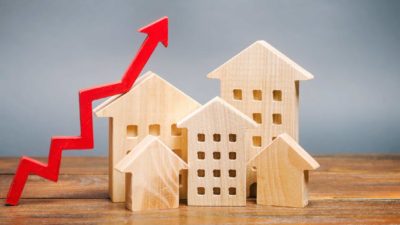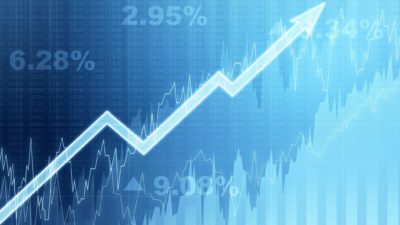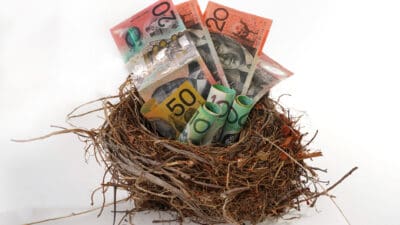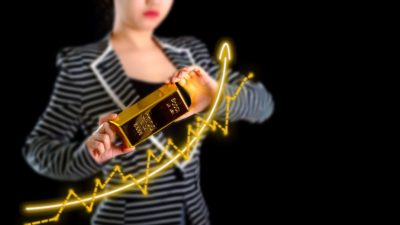The S&P/ASX 200 Index (ASX: XJO) is experiencing a sell-off today, down 0.99% to 7,726.9 points at the time of writing.
This is a sizeable 2.3% fall from the benchmark index's all-time high set on 2 April at 7,910.5 points.
AMP has published its predictions for where the ASX 200 will be by the year's end, as well as its tips on how other asset classes, such as cash, bonds and property, will perform over the rest of 2024.
But first, let's recap what the ASX 200 has done so far this year…
The ASX 200 began the year with a rally…
The ASX 200 started the year with a bit of weakness over the first few weeks following an outstanding Santa Rally that saw it move 11.95% higher between 31 October and 31 December.
But that new year nervousness gave way to positivity from about mid-January, and the ASX 200 moved pretty steadily towards its April peak.
The fire in its belly during those few months was optimism that there would be several interest rate cuts in the United States, possibly beginning in the first half of 2024, due to falling inflation.
The expectation in Australia was for a cut in the later part of the second half of the year.
But things have changed.
US inflation surprised on the upside last month, which threw a bucket of cold water on the idea of rate cuts any time soon.
Australia's March inflation rate followed the same pattern, which has also cast doubt over whether there will be a rate cut here in 2024 at all.
In fact, some economists suggest there might even be a hike!
In a new blog, AMP chief economist Dr Shane Oliver says Australia is still at risk of a recession, and there is volatility ahead for the ASX 200.
How will the ASX 200 finish the year?
AMP expects the ASX 200 to return 9% this year and to rise to about 7,900 points by the year's end.
That's just shy of its April high and indicates more volatility ahead and a rougher road for the economy.
Dr Oliver points out that ASX 200 valuations were stretched following the Santa Rally, and uncertainty about the economy and the prospect for rate cuts means share price gains are likely to be constrained.
Dr Oliver said:
Easing inflation pressures, central banks moving to cut rates and prospects for stronger growth in 2025 should make for good investment returns this year.
However, with a high risk of recession, delays to rate cuts and significant geopolitical risks, the remainder of the year is likely to be far rougher and more constrained than the first three months were.
What about cash, bonds and commercial property?
In terms of other assets besides ASX 200 shares, Dr Oliver predicts:
Bonds are likely to provide returns around running yield or a bit more, as inflation slows, and central banks cut rates.
Unlisted commercial property returns are likely to be negative again due to the lagged impact of high bond yields & working from home.
Cash and bank deposits are expected to provide returns of over 4%, reflecting the back up in interest rates.
What will happen to house prices and the currency?
Dr Oliver said Australian home prices are likely to see "more constrained gains in the year ahead as the supply shortfall remains, but still high interest rates constrain demand and unemployment rises".
He added:
The delay in rate cuts and talk of rate hikes risks renewed falls in property prices as its likely to cause buyers to hold back and distressed listings to rise.
Dr Oliver said the Australian dollar is likely to rise to US 70 cents over the next 12 months as the overvalued American dollar falls.
He adds that, "… in the near term the risks for the $A are on the downside as the Fed delays rate cuts and given the still high risk of an escalating conflict in the Middle East".
What's going on in the Australian economy?
Dr Oliver said a recession is "probably the main threat" for the Australian economy today.
While the rate of inflation is still falling, retail sales came in lower than expected in March. In fact, in per capita terms, we have now seen seven straight quarters of declining sales, despite strong population growth. This indicates a serious tightening of the belts among Australians.
Dr Oliver also said the ABS Household Spending Indicator slowed to 2.1% year over year in March.
The trade surplus fell again in March due to lower commodity prices and stronger imports.
"Trade looks likely to be a big detractor from March quarter GDP growth, possibly by as much as 1 percentage point," Dr Oliver said.
AMP's take on the housing crisis
Building approvals rose less than expected in March, with the housing shortage worsening. Home values rose 0.6% in April — the 15th consecutive month for growth, largely due to the undersupply.
Dr Oliver commented:
So far this year approvals are running around an annual pace of just 154,000 dwellings, which is well below underlying demand for housing of around 250,000 dwellings a year on the back of record immigration levels and well below the objective of Australian governments to build 240,000 dwellings a year.









